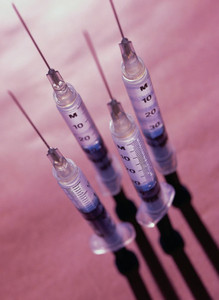The EMA’s comprehensive biosimilar regulatory pathway, which includes the need for new clinical trials and comparability studies that demonstrate quality, efficacy, and safety, is a barrier for the development of clinically superior compounds, according to innovation researchers at Utrecht University, Utrecht, The Netherlands [1].
EMA comparability studies limiting biosimilar success
Biosimilars/Research
|
Posted 16/09/2011
 0
Post your comment
0
Post your comment

The researchers claim that for regulatory purposes, clinical trials alone are sufficient, and have called for the comparability studies to be dropped. Only then, they claim, can state-of-the-art technology be fully utilised in biosimilar manufacturing.
For a biosimilar product to be approved by EMA, it has to be supported by a much wider range of data than a simple generic drug. Generics may be marketed if they can establish therapeutic equivalence to the original drug, i.e. contain an identical active substance, and have comparable pharmacokinetics. Generics do not require additional formal clinical efficacy and safety studies, and this relatively modest requirement is one of the major reasons generics can be marketed far cheaper than their respective innovator drug.
However, in the case of biosimilars, EMA has decided that additional clinical data is required alongside the submitted clinical equivalence data. This being the case, there is an argument that these comparability studies are surplus to requirements and are even holding innovation back.
For example, the first recombinant DNA-derived therapeutic proteins were introduced as far back as the 1980s, and comprised copies of endogenous human proteins such as erythropoietin, insulin, growth hormones, and cytokines. A wave of monoclonal antibodies followed, which have since been successfully used in anaemia, diabetes, cancer, hepatitis, and multiple sclerosis.
The patents of all of these first-wave products have either recently expired or are due to expire, paving the way for newer, more innovative biosimilar versions. However, despite manufacturing technology having moved on since the 1980s, in the vast majority of cases, the manufacturers of the original branded products have retained their old production techniques, principally because of the financial and regulatory consequences of changing them. The knock-on effect is that although biosimilar manufacturers could now use state-of-the-art technology, for the purposes of satisfying the comparability studies, they would be better advised to mimic this older technology, and ignore newer more innovative processes which could have greater clinical benefits.
Other arguments against comparability studies are that the assays used to determine product levels are often too imprecise; that the relation between pharmacokinetic parameters and the clinical effect of biologicals is unclear; that the dose-response curve of therapeutic proteins is often bell shaped (meaning that widely differing protein levels have the same clinical effect); that the acceptance range for pharmacokinetics parameters between biosimilar and reference product are difficult or impossible to predefine and justify; and that comparability studies that use survival as the primary clinical end point are associated with ethical and practical problems.
However, the overriding anomaly is this: under the current legislation, a biosimilar product could be denied an EMA licence if its isoform is incomparable with the original branded product, even if its efficacy and safety data are slightly superior. This, argue the researchers, is clearly wrong.
Related article
EMA biosimilar regulation should include complex biologicals
Reference
1. Schellekens H, Moors E. Clinical comparability and European biosimilar regulations. Nature. 2010;28(1):28-31.
News
FDA approves six denosumab biosimilars
EMA recommends approval for four biosimilars targeting three therapies
General
Samsung Bioepis wins Pyzchiva case; Regeneron patent rulings threaten foreign biosimilars
Chinese biosimilars go global: growth, partnerships, and challenges
What is the future for the US biosimilar interchangeability designation

Biosimilars/Research Posted 05/06/2025
Biosimilar clinical efficacy studies: are they still necessary?

Biosimilars/Research Posted 27/05/2025
The best selling biotechnology drugs of 2008: the next biosimilars targets








Post your comment